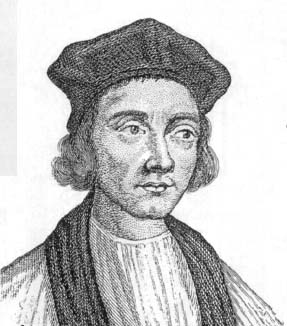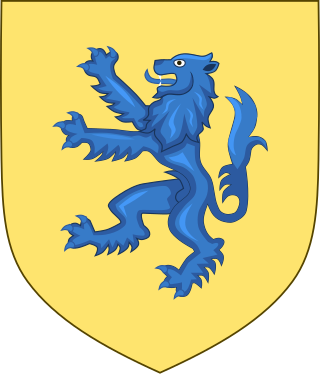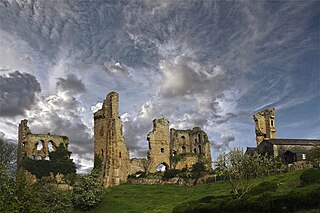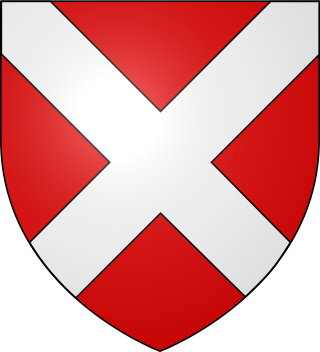
Edward VI was King of England and Ireland from 28 January 1547 until his death in 1553. He was crowned on 20 February 1547 at the age of nine. The only surviving son of Henry VIII by his third wife, Jane Seymour, Edward was the first English monarch to be raised as a Protestant. During his reign, the realm was governed by a regency council because Edward never reached maturity. The council was first led by his uncle Edward Seymour, Duke of Somerset (1547–1549), and then by John Dudley, Duke of Northumberland (1550–1553).

Thomas Cromwell, briefly Earl of Essex, was an English statesman and lawyer who served as chief minister to King Henry VIII from 1534 to 1540, when he was beheaded on orders of the king, who later blamed false charges for the execution.

Margaret Plantagenet, Countess of Salisbury, was the only surviving daughter of George Plantagenet, Duke of Clarence and his wife Isabel Neville. As a result of Margaret's marriage to Richard Pole, she was also known as Margaret Pole. She was one of just two women in 16th-century England to be a peeress in her own right without a husband in the House of Lords.

Richard Neville, 5th Earl of Salisbury KG PC was an English nobleman and magnate based in northern England who became a key supporter of the House of York during the early years of the Wars of the Roses. He was the father of Richard Neville, 16th Earl of Warwick, the "Kingmaker".

Ralph Neville, 1st Earl of WestmorlandEarl Marshal, was an English nobleman of the House of Neville.

Cuthbert Tunstall was an English humanist, bishop, diplomat, administrator and royal adviser. He served as Bishop of Durham during the reigns of Henry VIII, Edward VI, Mary I and Elizabeth I.

The title of Earl of Northumberland has been created several times in the Peerage of England and of Great Britain, succeeding the title Earl of Northumbria. Its most famous holders are the House of Percy, who were the most powerful noble family in Northern England for much of the Middle Ages. The heirs of the Percys, via a female line, were ultimately made Duke of Northumberland in 1766, and continue to hold the earldom as a subsidiary title.

The Pilgrimage of Grace was a popular revolt beginning in Yorkshire in October 1536, before spreading to other parts of Northern England including Cumberland, Northumberland, Durham and north Lancashire, under the leadership of Robert Aske. The "most serious of all Tudor period rebellions", it was a protest against Henry VIII's break with the Catholic Church, the dissolution of the lesser monasteries, and the policies of the King's chief minister, Thomas Cromwell, as well as other specific political, social, and economic grievances.

Henry Hastings, 3rd Earl of Huntingdon, KG, KB was an English Puritan nobleman. Educated alongside the future Edward VI, he was briefly imprisoned by Mary I, and later considered by some as a potential successor to Elizabeth I. He hotly opposed the scheme to marry Mary, Queen of Scots, to the Duke of Norfolk, and was entrusted by Elizabeth to see that the Scottish queen did not escape at the time of the threatened uprising in 1569. He served as President of the Council of the North from 1572 until his death in 1595.

The Percy family is an ancient English noble family. They were among the oldest and most powerful noble families in Northern England for much of the Middle Ages. The noble family is known for its long rivalry with the House of Neville, another family powerful in northern England during the 15th century. The feud between the two families, known as the Percy-Neville feud led to the Wars of the Roses, at the time known as the Civil Wars, in England.
Hugh de Puiset was a medieval Bishop of Durham and Chief Justiciar of England under King Richard I. He was the nephew of King Stephen of England and Henry of Blois, who both assisted Hugh's ecclesiastical career. He held the office of treasurer of York for a number of years, which led him into conflict with Henry Murdac, Archbishop of York. In 1153, Hugh was elected bishop of Durham despite the opposition of Murdac.

Thomas Savage was a prelate, diplomat and scholar during the Tudor period. Savage served as Chaplain to King Henry VII and was Archbishop of York from 1501 until his death in 1507. Prior to his consecration as a Bishop, Savage served as a diplomat and rector. As a diplomat Savage held the positions of English Ambassador to Castile and Portugal, during which time he helped broker the marriage treaty between Arthur, Prince of Wales and Catherine of Aragon in 1489, and later held the position of English Ambassador to France from 1490, where he took part in the conference at Boulogne.

Lady Jane Grey, also known as Lady Jane Dudley after her marriage and as the "Nine Days' Queen", was an English noblewoman who was proclaimed Queen of England and Ireland on 10 July 1553 and reigned until she was deposed by her cousin, Mary I, on 19 July 1553.

Sheriff Hutton Castle is a ruined quadrangular castle in the village of Sheriff Hutton, North Yorkshire, England. The site of the castle is 10 miles (16 km) north of York, and 8 miles (13 km) south-east of Easingwold.
Events from the 1530s in England.
Events from the 1470s in England.
Events from the 1500s in England.
Events from the 1550s in England. This decade marks the beginning of the Elizabethan era.

The House of Neville or Nevill family is a noble house of early medieval origin, which was a leading force in English politics in the Late Middle Ages. The family became one of the two major powers in northern England and played a central role in the Wars of the Roses along with their rival, the House of Percy.
Richard le Scrope was an English cleric who served as Bishop of Coventry and Lichfield and Archbishop of York and was executed in 1405 for his participation in the Northern Rising against King Henry IV.















